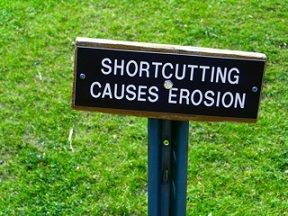Bio-based park benches in Bergen op Zoom were in the news during the first week of September. The initiative to acquire eleven bio-based benches, constructed from a composite of lightweight concrete with fibres of elephant grass, came from the Bergen op Zoom municipality, thus acting as launching customer for this product. It is an example that is worthwhile following up. However, there could be another side to the coin.

Bio-based products are not well known to the general public. Park benches are, however, very visible, and there’s the pitfall: the public can be made to understand that park benches are bio-based, but the public could just as easily conclude that bio-based means park benches.
Incomplete communication
This is not as far-fetched as it seems. Years ago the general public regarded recycled plastic marker posts as a telling example of recycling technology, and the public was not impressed. The result: a lack of interest in recycling and a still lasting lack of knowledge about the progress in recycling technology and applications.
The culprit? Incomplete communication. The park benches can easily be demonstrated as a successful bio-based product, beautifully designed, comfortable, durable and made by a local producer. But all these things are also applicable to a common wooden park bench, and such communication does not explain the biotech progress provided by these new benches. It does not address the clever underlying technology to produce the desired composite, nor the smart innovative developments, nor the work that was done to obtain a product that complies to a wide variety of requirements: generally speaking, the advances in bio-based technology.

Knowledge regarding further developments decisively forms the public’s perception of the bio-based economy. All this information is lost in translating technological biotech developments into bio-based achievements. The significance of bio-based park benches as a basis for further developments is not highlighted; using bio-based fibres in more sophisticated applications like bridges, the drafting of new technical rules, better knowledge of degradation of bio-based fibres, experience in the field of re-use of bio-based composite materials, or issues like improving the bond between fibres and concrete or resins.
Be good and tell it
I’m convinced it is a must to educate the general public better and more in-depth about bio-based technology achievements. To achieve a broader interest in bio-based opportunities, it is not enough to repeat the environmental message again and again. Just putting bio-based park benches in the shop window will also not suffice. You can only get the public to understand bio-based park benches when you give the subject more in-depth attention.
Be good and tell it: technology owners and developers should elaborate on their achievements and make these understandable and transparent for a broad public. And it should be the prime duty for communication officers writing about bio-based achievements to stress the significance of these.
An interesting read treating the state of affairs regarding the use of bio-based composites is an open access case study by Dr. Katrin Tazelaar from InHolland university of applied sciences. This 2017 case study (in Dutch) can be downloaded here.
Also published on Wijnand’s personal blog.
